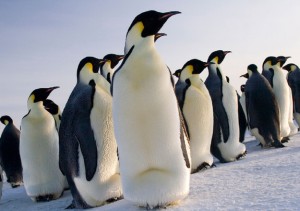Researchers Project 'Huge Decline' In Emperor Penguins
 Emperor penguins depend on the sea ice that rings the continent of Antarctic, so it’s no surprise that global warming, which is expected to melt some of that ice, may be bad news for these flightless, 4-foot (1.2-meter) tall birds.
Emperor penguins depend on the sea ice that rings the continent of Antarctic, so it’s no surprise that global warming, which is expected to melt some of that ice, may be bad news for these flightless, 4-foot (1.2-meter) tall birds.Since detailed information on most colonies is not available, the research focused on one well-studied colony of emperor penguins, at Terre Adélie in East Antarctica, to get an idea of what might happen to emperor penguins over the course of this century.
Their results aren’t reassuring; they project this colony is likely to decline from 3,000 breeding pairs to 575 by 2100, a potentially “huge decline,” said lead researcher Stéphanie Jenouvrier, a biologist at the Woods Hole Oceanographic Institution.
You can return to the main Market News page, or press the Back button on your browser.

